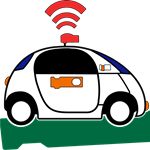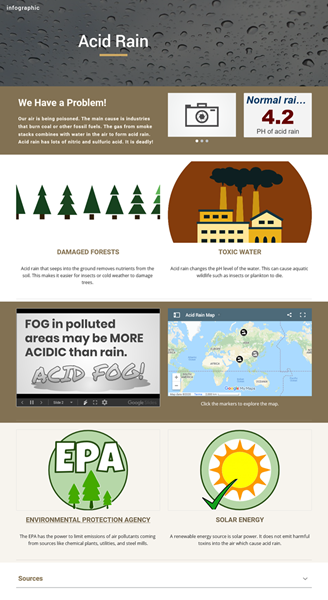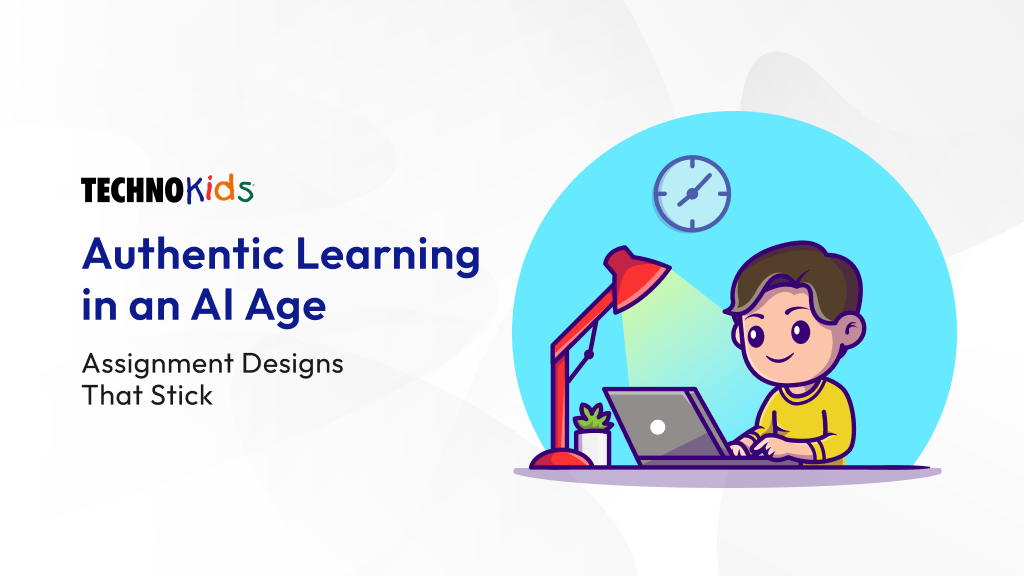In today’s classrooms, artificial intelligence is more than a buzzword. It’s a tool students are already using. From essay generators to math solvers to reading tutors, AI is everywhere. While banning it might seem like the obvious answer, a better alternative is rethinking how we teach and assess learning. Promoting authentic learning in an AI age starts with intentional assignment design that keeps students thinking for themselves.
Here’s how you can create AI-resistant, or AI-resilient, assignments that promote deeper, more meaningful learning.
Beyond the Bot: Why Authentic Learning Matters
AI can produce decent content quickly, but it doesn’t think, reflect, or understand. Authentic learning – learning that is meaningful, personal, and rooted in real-world application – remains as crucial as ever. The challenge is making sure students don’t outsource the thinking process to a bot.
1. Design for the Process, Not Just the Product
AI can generate a polished essay, but it can’t replicate a student’s learning journey. That’s why assignments that emphasize process over product are key.
Try this:
- Require submission of brainstorming notes, rough drafts, peer feedback, and self-reflections.
- Grade parts of the assignment along the way, not just the final result.
This approach encourages revision, reflection, and growth, which AI can’t automate.

The TechnoKids course TechnoBot AI recognizes the importance of both the creative process and the final product. In this project, students develop AI prototypes, such as a drone delivery system, robot pickup service, or self-driving tour bus. They follow a design thinking model and complete key process-based tasks: planning, reflecting, forming opinions, and evaluating real-world applications. From first idea to final product, students show what they know through ongoing, real-time check-ins.
2. Make It Personal
AI is good at summarizing information, but less effective at replicating real, lived experience.
Try prompts like:
- “Describe how this theme connects to the issue we discussed in class last week.”
- “Reflect on how this topic relates to you personally or to someone in your family.”
- “Apply this concept to a real situation in your school or community.”
These types of questions demand personal insight, not just information retrieval.
In TechnoKids’ TechnoEarth course, students become environmental stewards to inform the public about a local environmental issue and inspire others to get involved. They create an interactive infographic about the issue to show the cause, harmful effects, and solutions. The personal connection, along with the intentional creative design of the project not only has students inform others, but it also make a meaningful connection. It’s a personal connection that AI can’t replicate. Only students can bring their own voice to the issue.

3. Work With Unique or Curated Sources
When students work with custom-selected materials instead of broad, Googleable questions, AI becomes less helpful. Use articles you’ve selected, class discussions, videos, or interviews that students have conducted themselves.
Example:
- “Using the three short texts we read in class, explain how each author approaches the idea of resistance. Support your answer with direct references to the texts.”
AI can’t access classroom-only content, oral discussions, or original materials, so students must engage with the materials the teacher has provided.

In TechnoQuestionnaire, students investigate an issue that is not only personally meaningful but also requires the creation of unique data. They design a survey to track popular opinion. Using the generated information, they share their findings in a report with a jury of their peers. No shortcuts here – students must analyze real-world findings and draw their own conclusions.
4. Use Voice, Video, or Performance
Mixed media assignments, such as audio recordings, video explanations, oral exams, or live presentations, tap into creative expression and personal engagement, key aspects of authentic learning in an AI age.
Classroom Task:
- “Record a podcast episode discussing how this novel’s themes relate to a current event.”
- “Conduct an interview with a character from the novel or notable historical figure, asking them about their reasons for their actions.”
- “Perform a skit or monologue to portray a key scene in our study of this historical event.”
Students must show what they know in a different format, one that’s harder for AI to fake convincingly.
Students play the role of digital marketer in TechnoAd. They analyze selling tactics and video production techniques, then create a short video ad. They share the final product in a presentation. In their marketing report, students explain how and why they made creative decisions. All parts of the project require student creativity and insight that AI cannot replicate.

5. Encourage Ethical and Thoughtful Use of AI
Rather than ban it, teach students how to use AI responsibly and reflectively as a tool, not a shortcut.
Idea:
- Ask students to generate an AI-written response, then critique it: “What’s accurate? What’s missing or misleading? How would you improve it?”
Analyzing AI-generated content helps develop metacognition, media literacy, and critical thinking. These are skills for the real world that students will carry beyond the classroom.

TechnoFuture AI – a soon to be released TechnoKids project – invites students to create a presentation that imagines the world of tomorrow. They use and then critically examine tools such as AI image generators. Next, students reflect on the ethics of AI-generated artwork and learn about intellectual property rules, meeting standards set by the Computer Science Teachers Association.
Rethinking Assessment and Authentic Learning in an AI Age
As educators, we’re not just preparing students to pass tests. We’re preparing them to think independently, ethically, and critically. AI is just one more reason be intentional in curriculum design. Technology advances such as AI just have teachers shift our focus toward personally meaningful, reflective, and authentic learning.
Thoughtful, responsible use of AI in the classroom begins with how we guide students to engage with it.
